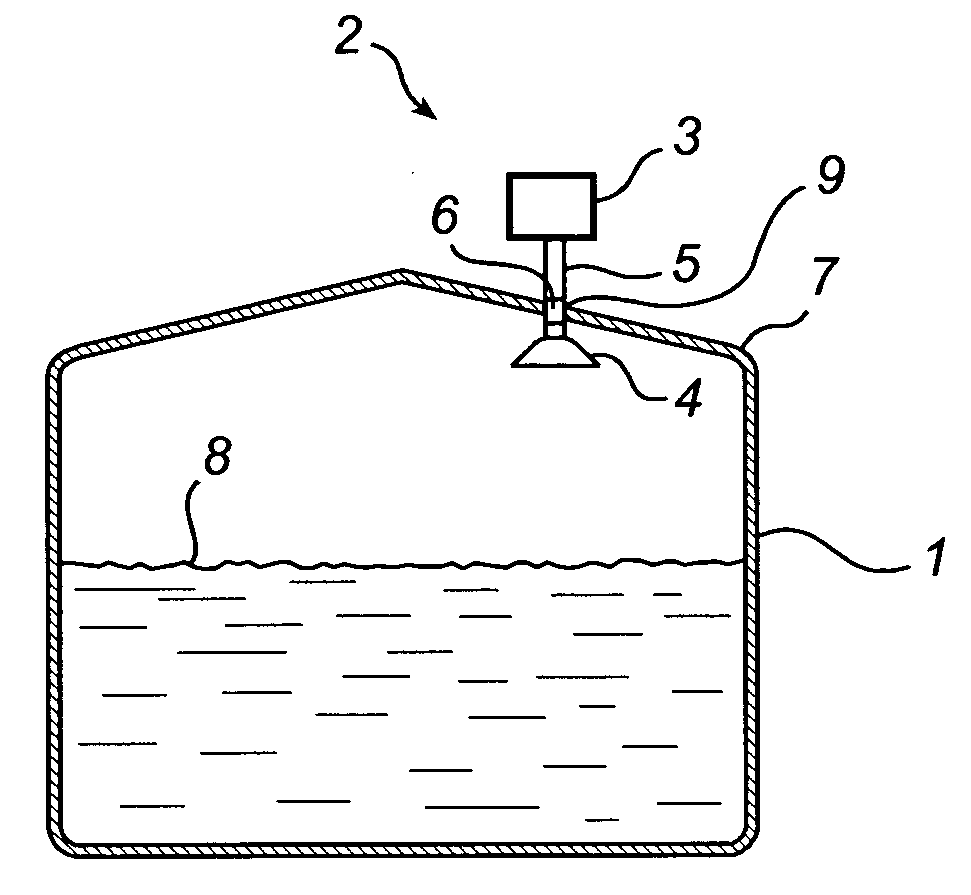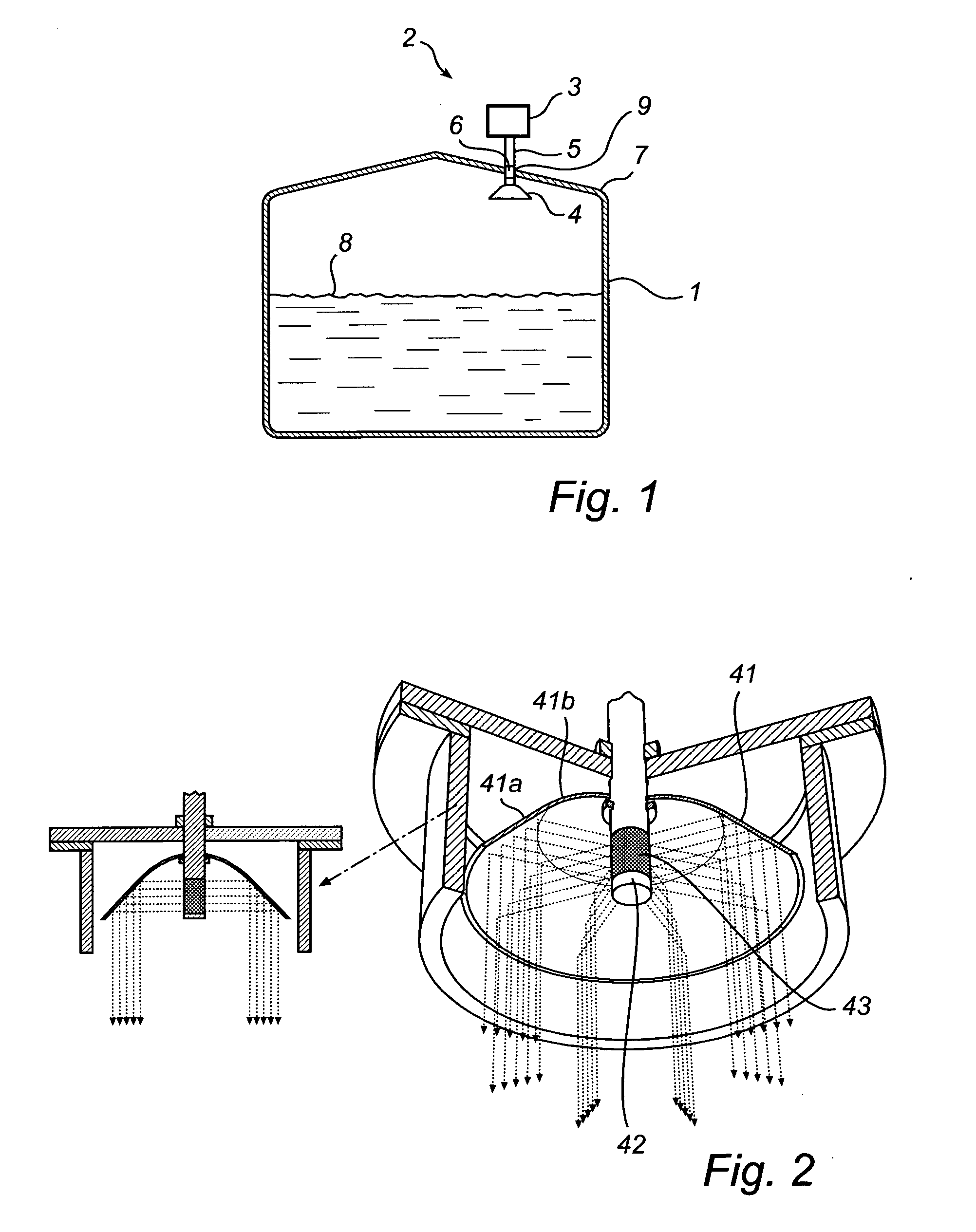Antenna for a radar level gauge
- Summary
- Abstract
- Description
- Claims
- Application Information
AI Technical Summary
Benefits of technology
Problems solved by technology
Method used
Image
Examples
Embodiment Construction
[0043]FIG. 1 shows schematically a radar level gauge system 2, incorporating an antenna according to the present invention. In brief, the system in FIG. 1 comprises an electronic unit 3 for transmitting and receiving radar signals and processing the received signals in order to determine the level 8 of a filling material in the tank 1, an antenna 4 arranged inside the tank for transmitting and receiving radar waves into the tank, to be discussed in more detail in the following, and a radar wave guide assembly 5 for guiding signals between the electronic unit 3 and the antenna 4. The same antenna could preferably be used both as a transmitter for emitting the output radiation and as a receiver for receiving the reflected echo signal, even though it is also possible to use separate antennas for these functions. The radar level gauge is preferably arranged on the tank roof 7, whereby the waveguide 5 is arrange to protrude into the tank through a tank opening 6.
[0044]In use, the radar l...
PUM
 Login to View More
Login to View More Abstract
Description
Claims
Application Information
 Login to View More
Login to View More - R&D
- Intellectual Property
- Life Sciences
- Materials
- Tech Scout
- Unparalleled Data Quality
- Higher Quality Content
- 60% Fewer Hallucinations
Browse by: Latest US Patents, China's latest patents, Technical Efficacy Thesaurus, Application Domain, Technology Topic, Popular Technical Reports.
© 2025 PatSnap. All rights reserved.Legal|Privacy policy|Modern Slavery Act Transparency Statement|Sitemap|About US| Contact US: help@patsnap.com



